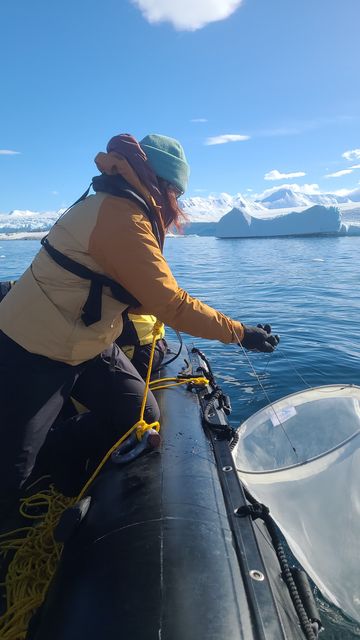British scientists are hoping to monitor Antarctic krill from space as the species faces growing threats from climate change and overfishing.
WWF, the University of Strathclyde and the British Antarctic Survey (BAS) have teamed up for the pioneering project, which will involve comparing light patterns, combined with satellite and remote sensing data, to better understand where populations are and how they are changing over time.
The researchers ultimately hope the work will help to inform decision-makers and safeguard these vital but often overlooked crustaceans.
The tiny creatures are only a few centimetres long but play a critical role in Antarctic marine ecosystems, sustaining penguins, seals and the world’s largest animals, including blue whales.
They also help to draw down and store vast amounts of planet-heating carbon from the atmosphere.
The project, which was launched at the UN climate conference Cop29 in Baku, Azerbaijan, in November, has kicked off with Strathclyde’s Dr Cait McCarry recently returning from an Antarctic expedition where she was sampling live krill.
Rod Downie, chief polar adviser at WWF-UK, said: “Antarctic krill are the superheroes of the Southern Ocean. These tiny, unsung heroes are the beating heart of the Southern Ocean, sustaining incredible marine life.
Cait McCarry conducts krill research in Antarctica (University of Strathclyde)
“They are the reason why humpback whales migrate thousands of miles every year to feed in the icy waters around Antarctica. And they are climate heroes too, playing a critical role in drawing down carbon from the ocean surface.
“But climate change and unsustainable fishing are putting them at risk. With sea ice declining and industrial fishing growing, we urgently need to better manage the fishery and protect krill habitats within a network of marine protected areas. ‘Krill from Space’ may give us a new tool to help monitor and safeguard this vital species.”
David McKee, reader in the department of physics at Strathclyde, said: “Ocean colour satellites have provided daily global monitoring of the world ocean since 1997. However, it is only very recently that we have been able to identify a signal associated with the pigment that turns krill red.
“This is a ground-breaking effort to develop a new way to monitor krill swarms at the surface where they are known to occur in huge patches that are important feeding grounds for whales and other important marine species.
“In time we hope to be able to support international conservation and sustainable management of this most important Antarctic species.”
By eating and excreting phytoplankton and shedding their exoskeletons, Antarctic kill can transfer 0.3 million tonnes of carbon to the deep ocean every day, which is equivalent to the UK’s daily carbon emissions.
But rising sea temperatures are causing krill nurseries lose their protective sea ice, causing populations to shrink and shift south.
As a cornerstone to the Antarctic food web above the sea floor, scientists say that protecting the species is critical for maintaining both biodiversity and climate stability.
